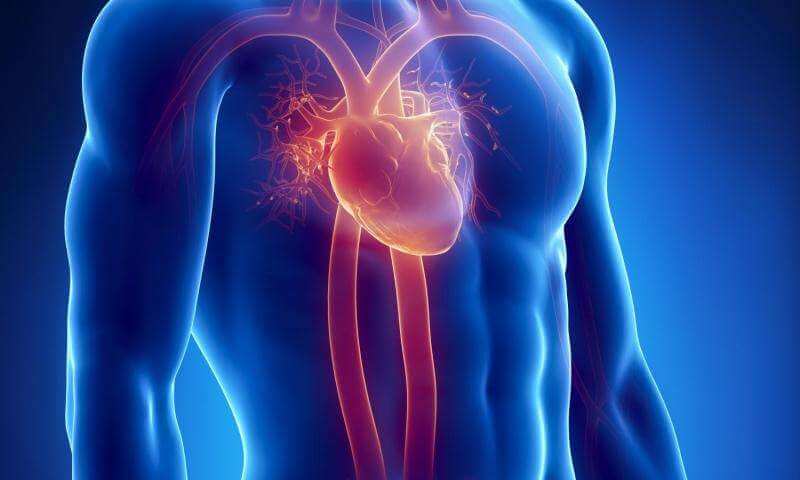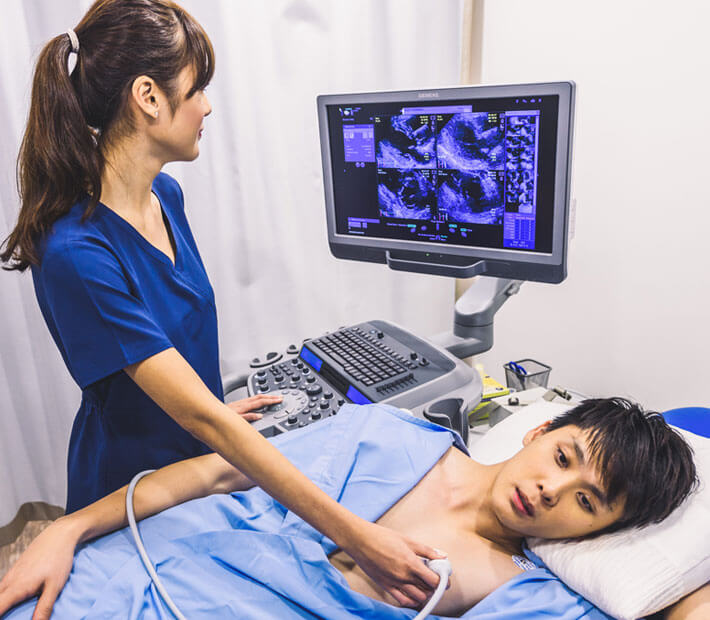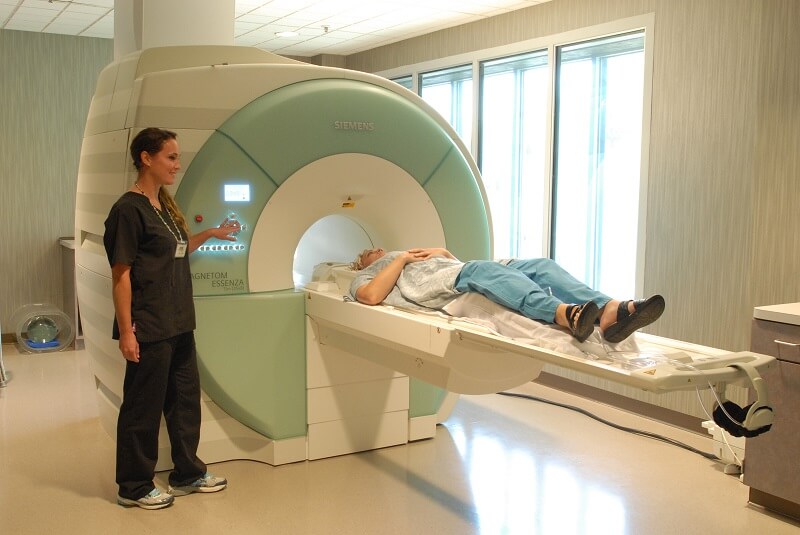When the patient has abnormal signs related to the heart, in order to most accurately check the condition, doctors will appoint the patient to perform diagnostic methods of coronary artery disease to get conclusions and the best treatment for each case.
However, not everyone understands how many common cardiovascular disease diagnosis methods are and what the specific purpose of each method is.
Coronary heart disease, also known as atherosclerotic heart disease, occurs when an artery is narrowed, caused by plaque in the lumen that blocks blood flow, causing the artery to become harder.
If not detected early and treated in time, it will lead to life-threatening cardiovascular diseases such as heart failure, myocardial infarction.

Today, thanks to the advancement of medicine, through the diagnostic methods of coronary artery disease, it increases effectiveness in diagnosing and detecting cardiovascular diseases as follows:
Method of Measuring The Electrocardiogram
The simplest and least expensive way to diagnose coronary artery disease is through the results of the electrocardiogram.
Electrocardiogram (ECG) is a highly regarded method of detecting cardiovascular disease, painless, and non-invasive.
When performing an electrocardiogram, the patient will lie on the bed in a supine position, then the doctor will place 10 electrodes in turn on the positions of the patient's chest, arms, and legs.
The process of taking an electrocardiogram only takes about 10 minutes, through the graph recorded on the computer will help the doctor detect abnormalities related to myocardial necrosis, myocardial anemia, or complications caused by cardiovascular diseases such as arrhythmia, thickening of the heart wall.
However, the method of the electrocardiogram to check cardiovascular is not always 100% accurate, there are cases where the patient has coronary artery disease but the ECG measurement does not detect any abnormal signs.
At this time, if there is any doubt, the doctor will appoint the patient to perform further tests to confirm more firmly.
Electrocardiogram Exercise
The exercise ECG method is often used in patients with suspected coronary artery disease, hypertension, heart failure, valvular disease, and monitoring of the progression of coronary heart failure.
This is a non-invasive, non-bleeding method to check the lack of blood to feed the heart when the body has to work hard, needs a lot of energy.

When performing a stress ECG measurement, the patient will have to start up on an electrocardiograph, often used primarily as a running mat or a stationary bicycle with an electrically charged component, every about 3 minutes speed up the running mat until you notice signs of the need to stop the stress test.
Echocardiography
Ultrasound is a commonly used method today, quite familiar to patients in diagnosing the disease, with the advantage of being painless, so it makes many patients feel more secure when indicated to conduct a diagnostic ultrasound. But many people wonder whether echocardiography can detect coronary artery disease or not?
Echocardiography in coronary artery disease often helps to detect coronary artery disease when it has progressed in a late-stage, in the presence of a movement disorder in the heart chamber. However, it is necessary to have modern medical equipment and the experience of a doctor to deliver highly accurate results.

Through ultrasonic waves on the transducer, images of the working heart will be obtained on the computer screen, helping doctors to observe and evaluate the function of the heart, heart valves and the movement of the heart wall is normally or not.
In the case of patients with coronary artery disease, due to insufficient blood supply to the heart when the coronary branch becomes fibrotic and the damage becomes less active or inactive. Thanks to that, it helps to detect the heart abnormalities of the patient.
Echocardiogram
Like echocardiography, for exercise echocardiography, doctors will use a probe placed on the patient's chest, through the ultrasound wave will capture images of the heart during operation.
But the difference is that an exercise cardiac ultrasound will be performed after the patient has undergone a stress test (strenuous activity) to compare the results between visual disturbance of movement during exercise and during exercise. do not move when the heart muscle wall is at rest.
Blood Test
A blood test is one of the diagnostic tests for cardiovascular disease commonly used in cases where patients have related conditions such as diabetes, thyroid disease, anemia.
Not only that, but the blood test also assists in adjusting the number of drugs in time to limit unwanted side effects in each disease stage thanks to the results of blood tests before the patient uses the drug, duration of using the drug, and after using medication.
Commonly conducted blood tests such as measuring the concentration of electrolytes in the blood, biochemistry tests including measuring blood glucose, measuring cholesterol, thyroid function tests, quantifying B levels -type sodiumuretic peptide in the blood.
Image Diagnostic Method
Imaging methods are often used for early diagnosis of cardiovascular diseases such as:

Computed tomography of multiple coronary arteries: This is a modern method that helps to obtain the anatomical images of coronary arteries on scans, as well as assess the degree of coronary artery calcification, artery stenosis, and obvious and highly accurate cardiovascular abnormalities.
Magnetic resonance imaging: Also known as MRI, this is a method that helps to obtain high-resolution images, thereby helping observers to evaluate in detail the damage related to cardiovascular.
MRI also has the ability to reproduce 3D, fast time, does not cause side effects compared with CT or X-ray methods. This is one of the meaningful methods in the diagnosis, prognosis, and treatment direction of patients with cardiovascular disease.
Myocardial Perfusion Imaging (MPI): This is one of the safe and high-precision, non-invasive methods that help assess the extent of coronary artery diseases such as myocardial anemia, degree of stenosis, and damage caused by cardiovascular disease.
Cardiac Catheterization and Coronary Angiography
One of the most modern cardiac function tests in use today is cardiac catheterization and percutaneous coronary angiography.
This method will be conducted in a cardiovascular intervention room equipped with modern medical equipment, with a fluorescent screen that increases brightness to support percutaneous coronary angiography.

Through the femoral or rotating artery, doctors will begin to insert the catheter up the patient's heart to the coronary artery rapidly, then continue to pump a special solution known as a contrast medium into the coronary artery thanks to the catheter.
Based on this procedure, it will help to accurately assess the shape, position, size, and narrowing degree of the coronary artery displayed on the fluorescent screen.
Although cardiac catheterization and percutaneous coronary angiography are invasive methods that cause bleeding, they will not cause pain to the patient with local anesthesia. No anesthesia is used for this method to minimize the risk of serious complications for the patient.
Depending on the patient's condition, doctors will appoint patients to perform various diagnostic methods of coronary artery disease. But in general, these methods are valuable to contribute to the diagnosis and treatment of cardiovascular disease, have high safety, less pain, and limit the risks.
However, these methods are usually only valid for assessing disease condition and heart function at the time of testing. Therefore, when the results are available, the patient needs to follow the doctor's treatment regimen and regular examinations to have an accurate diagnosis in the next progression of the disease, helping the treatment to bring high results.
Please find the nearby location or the nearest branch your home to visit for tests and get quick online results. For more detailed information about our test menu and price list, click here.
The site cannot and does not contain medical advice. The medical information is provided for general informational and educational purposes only and is not a substitute for professional advice. Accordingly, before taking any actions based upon such information, we encourage you to consult with the appropriate professionals.

 1900 1717
1900 1717 